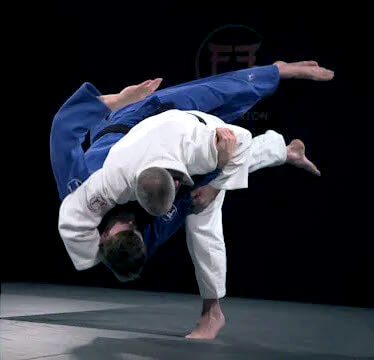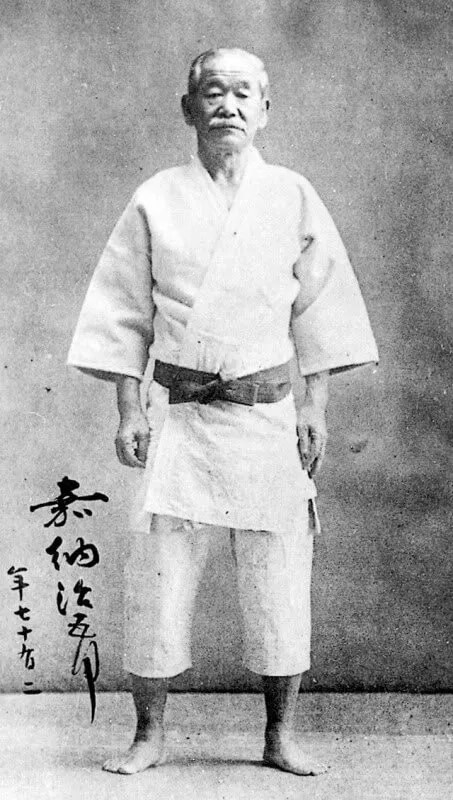Judo vs Brazilian Jiu-Jitsu
Brazilian Jiu-Jitsu: A Specialized Offshoot of Judo
In the world of grappling martial arts, Judo and Brazilian Jiu-Jitsu (BJJ) are frequently discussed as separate disciplines. However, understanding their true relationship reveals that BJJ is actually a specialized offshoot that emerged from Judo’s comprehensive technical foundation.
The Direct Lineage: BJJ’s Origins in Judo
The history is clear and undisputed: Brazilian Jiu-Jitsu did not develop independently but emerged directly from Judo. In 1914, Mitsuyo Maeda, a direct student of Judo founder Jigoro Kano and a high-ranking Kodokan Judo practitioner, arrived in Brazil. Maeda, known as “Conde Koma” (Count Combat), taught his art—which was unequivocally Judo—to Carlos Gracie and later to his brother Helio Gracie.
What the Gracies received from Maeda wasn’t a separate martial art but traditional Kodokan Judo, which at that time already contained extensive groundwork (ne-waza) along with standing techniques (tachi-waza). The Gracies, particularly Helio, modified and emphasized certain elements of this inherited Judo curriculum to accommodate his smaller physique, focusing primarily on the ground fighting aspects.
What emerged is what is now known as “Brazilian Jiu-Jitsu”… a specialized adaptation of Judo’s ground fighting component—essentially a subset of techniques carefully selected from Judo’s broader technical repertoire.
Technical Analysis: BJJ as a Specialized Subset
When examining the technical content of both arts, Judo’s comprehensive nature becomes evident:
The Complete Technical Spectrum in Judo
Judo’s curriculum encompasses:
Standing Techniques (Tachi-waza):
- Throwing techniques (Nage-waza) including hand throws (te-waza), hip throws (koshi-waza), foot/leg throws (ashi-waza), and sacrifice throws (sutemi-waza)
- Comprehensive gripping strategies (kumi-kata)
- Sophisticated off-balancing principles (kuzushi)

Ground Techniques (Ne-waza):
- Holding techniques (osaekomi-waza)
- Choking techniques (shime-waza)
- Joint locking techniques (kansetsu-waza)
- Transitional movements and combinations
Additional Components:
- Atemi-waza (striking techniques) in kata
- Self-defense applications (goshin-jutsu)
- Formal practice methods (kata)
BJJ’s Specialized Focus
In contrast, BJJ concentrates predominantly on:
- Ground fighting positions, particularly guard variations
- Extended ground transitions and chains
- Submission techniques, with special emphasis on certain joint locks
- Limited standing work, often borrowed directly from Judo but typically practiced with less depth
While Brazilian Jiu-jitsu has been deeply refined and expanded in specific directions, it nonetheless constitutes a narrower technical focus than Judo’s comprehensive approach.
Philosophical and Pedagogical Completeness
Beyond mere techniques, Judo was conceived by Jigoro Kano as a complete educational system:
- Physical Education: Judo was designed to develop the entire body through balanced exercise.
- Mental Development: The principles of maximum efficiency (seiryoku zenyo) and mutual benefit (jita kyoei) provide philosophical depth.
- Character Building: Judo emphasizes discipline, respect, and personal growth.
- Competition Framework: Judo includes a carefully structured competitive system designed to allow full application of techniques while maintaining safety.
BJJ has adopted some of these elements but generally with a narrower focus on ground fighting efficiency and competition. While BJJ has developed its own rich culture and training methodology, it isn’t nearly as well-developed as the comprehensive educational framework that Kano established for Judo.
Cross-Training in Both Judo & Brazilian Jiu Jitsu
When it comes to practical self-defense, Judo objectively outperform Brazilian Jiu-jitsu for many reasons.
In competition, Judo practitioners with strong ne-waza skills can perform admirably in BJJ competitions. Conversely, BJJ specialists entering Judo competitions often struggle with the standing phase and the different tempo of ground engagements.
While many grapplers today train in both arts, understanding their relationship will help you develop an approach that fits your goals. Rather than viewing them as equal but different arts, a more accurate perspective is that training in Judo provides a complete grappling system with both standing and ground components, while supplementary training in BJJ can offer a specialized depth in aspects ground fighting.
Judo: the Complete Martial Art
When examined objectively through historical lineage, technical breadth, philosophical framework, and practical application, it becomes clear that Judo represents the more complete martial art. Brazilian Jiu-Jitsu, while tremendously effective in its domain, ultimately developed as a specialized subset of Judo’s comprehensive technical curriculum.
This is not to diminish BJJ’s significant contributions to martial arts. The Gracies and subsequent BJJ innovators deserve immense credit for their refinement and expansion of ground fighting techniques. Their specialized focus has created an incredibly deep system of ground combat that has influenced all grappling arts, including modern Judo.
However, for the martial artist seeking the most complete grappling education, Judo provides the broader foundation. Its standing techniques, transitional skills, groundwork, philosophical depth, and educational framework offer a comprehensive system from which specialized practices like BJJ have emerged.
The ideal approach for serious grapplers may be to build a foundation in Judo’s complete system, understanding its broad principles and techniques, while also studying BJJ to develop specialized ground fighting prowess. This combined approach acknowledges the historical and technical reality: Brazilian Jiu-Jitsu, for all its effectiveness, remains a brilliantly developed subset of Judo’s more complete martial art system.
Visit Us and Try Your First Class for FREE!
Call ahead or just stop in during one of our scheduled Judo & Jiujitsu classes and hop on the mat with us!
Please try to arrive at least 10 minutes early so we can get you all set up with a clean gi (uniform) to use during class.

